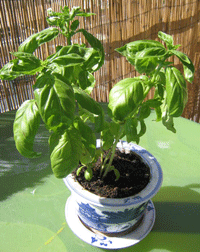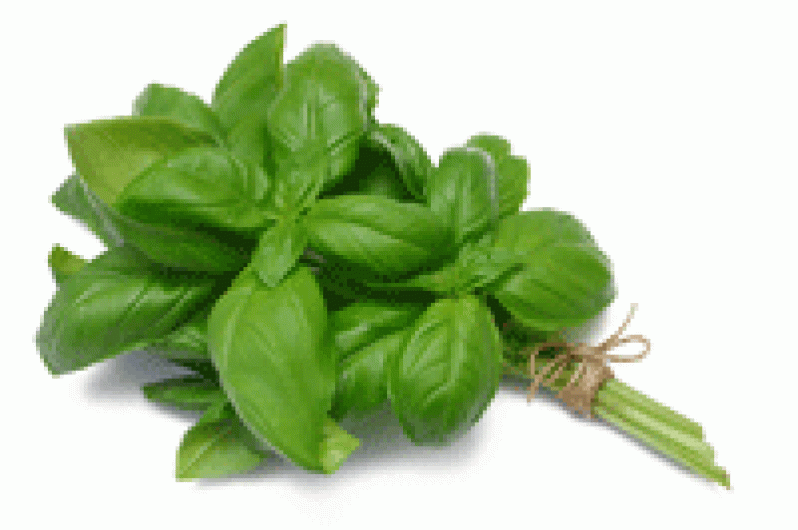The irresistible Basil
WERE you to talk about Ocimum basilicum, you would most likely be ignored; but if you were to mention BASIL, or “married-man-pork”, you would instantly engage the interest and attention of cooks, many of whom know of the power of this culinary herb to magically transform ordinary cooking into something unforgettable, making its use so widespread as to be considered commonplace.  But Basil’s history of cultivation and use is anything but commonplace. Botanical literature reveals that Basil (pronounced variously as bazzle and barzle) has held pride of place in culinary circles for the past five thousand years (5000), making it one of the oldest known of such herbs.
But Basil’s history of cultivation and use is anything but commonplace. Botanical literature reveals that Basil (pronounced variously as bazzle and barzle) has held pride of place in culinary circles for the past five thousand years (5000), making it one of the oldest known of such herbs.
Basil is an excellent source of Vitamin K, and a very good source of iron, calcium and Vitamin A.
Moreover, Basil is a good source of dietary fibre, manganese, magnesium, Vitamin C and potassium.
There are different types of Basil plants, each with its differing leaf colouration, varying scent, and peculiar flavour. Leaves of the Basil plant used in cooking can range from green to reddish to purple in colouration, depending on the variety.
There are more than 60 varieties of Basil, each with its own distinct flavour, which range from lemon, thyme, jasmine, clove, cinnamon, and anise.
Bush and sweet Basil have tender, bright green foliage which emit a spicy, clove-like aroma. Sweet Basil leaves are smaller than bush Basil leaves, and have a stronger aroma than the latter.
Both varieties bear small, white, lipped flowers. Sweet Basil grows to 75 cm, and bush Basil to 30 cm.
Good reputation
A “main man” around the kitchen for so long, this native to India, Africa and Asia allegedly derived its name from the terrifying basilisk, a half-lizard, half-dragon creature from Greek mythology, which had a fatal piercing stare. Although this aspect of the Basil’s reputation has moved into the realm of fable, the medicinal application of a Basil leaf is still considered magical cure for other venomous bites and maladies.
Esteemed
In Greece today, Basil is readily grown as an ornamental plant, and is used in certain religious rituals as a symbol of fertility.
In India, Basil was consecrated to the Hindu god Vishnu, whose wife Tulasi (also known as Tulsi) was said to have taken the form of the Basil when she came to earth. Many Hindus avoid harming Basil plants without very good reason; and, even then, offer up prayers asking for forgiveness for touching a part of Tulasi.
In Italy, young maidens would wear a sprig of Basil in their hair as a sign of their availability to be courted. In some regions of Italy, Basil is known as “kiss me Nicholas.”
This herb is similarly regarded in Romania, where if a boy accepts a sprig of Basil from a girl, it means they are engaged to be married.
The French sometimes call Basil “l’herbe royale”, while Jewish folklore suggests it adds strength to those who are fasting.
In Portugal, dwarf bush Basil is traditionally presented in a pot, along with a poem and a pom-pom, to a sweetheart on the religious holidays of Saint John and Saint Anthony.
African legend claims that Basil protects against scorpions; while the English Botanist Culpeper cites one “Hilarius, a French physician”, as affirming it common knowledge that if one were to smell Basil too much, it would breed scorpions in that one’s brain.
The sun-loving Basil plant can be grown in a container or in the ground, but a warm location is desirable. An added benefit to gardening buffs growing their own Basil is that it allegedly repels flies, mosquitoes and cockroaches.
Basil plants are available from the local horticultural specialists at the # 1 Plant Shop on Sheriff Street (Tel # 227-8094).


.jpg)











